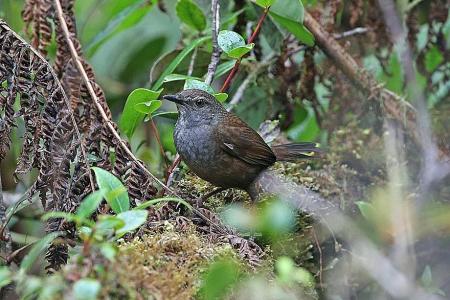NUS prof and team found 10 new species of birds in Indonesia
Associate Professor Frank Rheindt thought there was little more to discover about new bird species.
But to his surprise, he found 10 new species of birds on a trip to three small islands off Sulawesi, Indonesia, in 2013.
"We were all surprised there was a place on earth with so many new birds," he told The New Paper yesterday.
Prof Rheindt was presenting the discovery of five new species of birds and five new sub-species at a press event at the National University of Singapore (NUS) Department of Biological Sciences.
"Birds are one of the best known classes of animals, with only five to six new species in the world being discovered every year," said the German biologist, 42, who works at NUS.
Together with four other NUS researchers and two from the Indonesian Institute of Sciences, the seven-man team spent six weeks on remote islands in east Indonesia .
The team was led to believe those deep-sea islands in Indonesia's Wallacea region would be home to many unique species of birds due to the absence of land connections.
Prof Rheindt said he was most fond of the Taliabu Grasshopper-Warbler, the most "inconspicuous" bird of the ones found.
He first heard its "cricket-like" voice in the forest early in the trip, only to find it three days later. "I was elated. I knew I wasn't wrong and it wasn't just a cricket," he said.
The brown, palm-size songbird is recognisable for its "scalpy texture", said Prof Rheindt.
However, the Grasshopper-Warbler and many of the newly discovered birds may have only a few decades of existence left due to habitat loss and climate change, Prof Rheindt said.
Many of these birds are picky about their habitat, he explained.
For example, the Grasshopper-Warbler resides in stunted forests in higher altitudes where temperatures are relatively lower. Rising temperatures due to climate change could force it to move higher up the mountains where there is a smaller space for the birds to live.
Prof Rheindt has also noticed logging activities affecting the landscape over the past few years.
"The forest was trashed. Big trees have been cut, which damages the smaller trees around them too... all part of the birds' habitat," he said.
"The process of regrowth would take a very long time. Many species would not be there any more."
The results of his study will be published today in the academic journal Science. He said he wishes the journal renews interest in the discovery of biodiversity to understand the needs of conservation.
He said: "I am deeply saddened when we lose biodiversity."
"These creatures have held out for years, only to be wiped out in this evolutionary moment with humans around."
Get The New Paper on your phone with the free TNP app. Download from the Apple App Store or Google Play Store now



